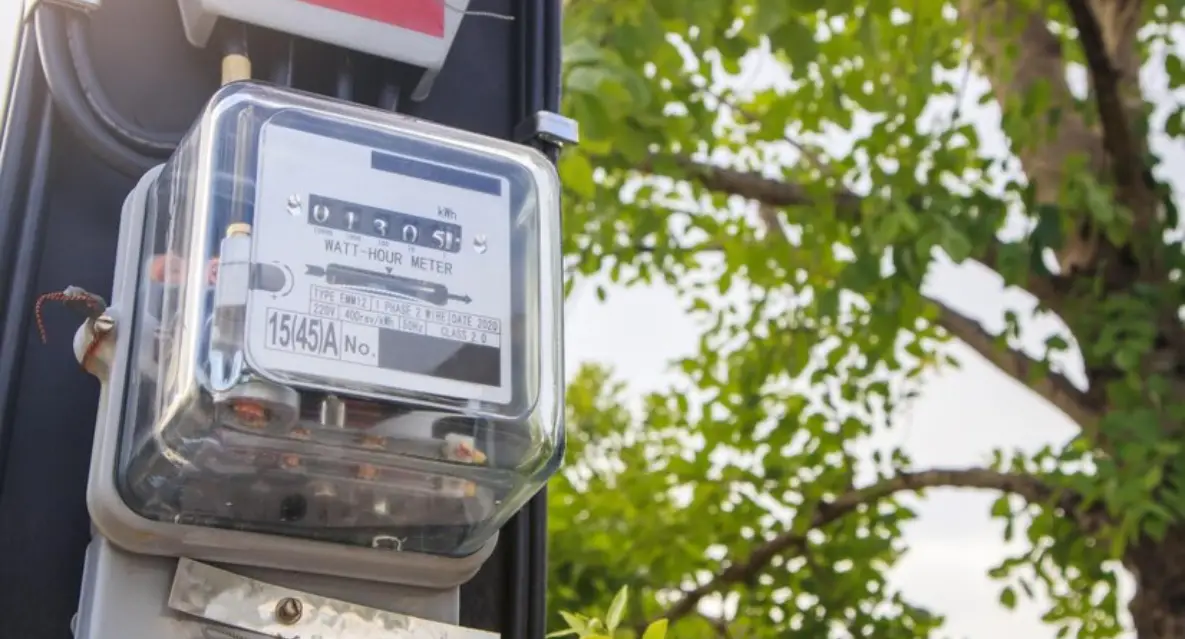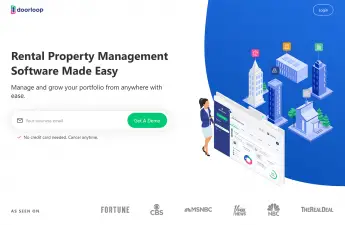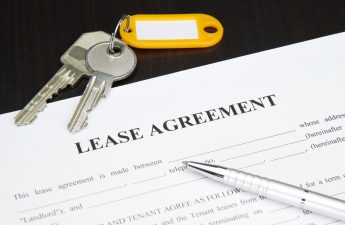As a landlord, you may be renting out an apartment with utilities included in the rent. This appears simple as you just charge one price for rent and utilities. However, costs seem to be always increasing as utility rates go up. You may also get the occasional surprise utility bill when tenants use excess energy, leave lights on, turn the heat or AC on too high, or leave the water running. How can landlords reduce their utility charges, prevent surprise bills, and even make extra rental income each month? A common way is to bill back tenants for utilities. This can be done in a couple of ways: submetering water, electricity, and natural gas; or implementing a Ratio Utility Billing System (RUBS).
In this article, we share how landlords that are currently paying for utilities can maximize their rental investment return by recouping each resident’s portion of their energy consumption. When tenants know they are responsible for paying their share of utilities, they’ll naturally use less of it. Conversely, if they don’t have to pay their share or don’t know how much they are actually using, landlords might find costly surprises in their utility bills.
Note: This is the 4th in our series exploring the best ways to increase rent. You can read our other installments here:
- Part 1: 6 Rental Property Renovations That Will Boost Your Income
- Part 2: Collect Fees for Pets in Rental Property
- Part 3: Furnished Rental Apartments
- Part 5: Additional Sources of Rental Income
- Part 6: The Top 8 Apartment Amenities Renters Want
- Part 7: Tips to Make Your Rental Listing Stand Out
- Part 8: How to Write a Rent Increase Notice
Do you charge your tenants for their share of utilities? Let us know what you do in the comments below!
Submetering Water, Electricity, and Gas
Submetering refers to the practice of installing separate meters for each apartment. A submeter on every rental unit for each utility (ie, water, gas, and electricity) allows property managers and landlords to measure and record actual utility usage. Landlords then bill tenants for their usage at each utility company’s normal rates. Property owners are only left to pay for any energy use in common or shared areas.
Benefits of Electricity, Gas, and Water Submetering
Submetering electricity, water, and gas can help landlords reap the following benefits:
- Charge back utility costs accurately based on actual tenant usage
- Monitor and record actual energy consumption based on real-time usage
- Compare usage of utilities across similar units over time
- Identify and eliminate wasted energy by continuous tracking of utility usage
- Get insights to make well-informed decisions that optimize energy performance
- Identify irregularities that may indicate water leaks, maintenance problems, or other issues with water, gas, or electrical systems
Additionally, submetering is also known to provide energy savings of up to 15-20% as compared to when utilities are included in rent. You may also widen your tenant pool by attracting residents who are more eco-conscious and inclined to limit their energy usage.
By submetering utilities, building owners can set up a predictable budget as they need to pay only for the common areas, which can be controlled to remain relatively stable.
Submetering Water, Gas and Electricity: Costs and Other Considerations
Submetering utilities can potentially save landlords thousands of dollars. However, there are substantial upfront costs. You need to purchase submeters, pay for installation, and probably hire electricians and plumbers.
Additionally, the utility configuration in many existing apartments may not support the installation of submeters. For instance, many hi-rise buildings have several pipes supplying water to a single apartment. Other utilities may even be difficult to access. It can be quite expensive to install numerous water submetering units to measure total water consumption for every apartment. Moreover, landlords would need to set aside time to check meters, calculate individual unit costs, and then invoice and collect fees.
Some states and locations also have specific codes and requirements around charging tenants for submetering. For example, in Massachusetts, landlords must meet several criteria including hiring licensed installers, certain lease requirements, and additionally installing low flow fixtures in kitchens and bathrooms. They are not allowed to charge for utility usage in common areas and often require permission and approval from the local city or county. This may be the case where your property is as well.
Ratio Utility Billing System (RUBS)
A Ratio Utility Billing System, or RUBS, is a promising solution for situations where installing submeters is too expensive or logistically challenging. A RUBS system calculates utility bills for each tenant based on industry-accepted formulas and takes into account apartment size, occupancy, number of bedrooms, layout, amenities, and more.
In a ratio utility billing system, landlords do not charge based on actual usage. Instead, they charge a prorated amount of the entire property’s utility bill for each unit or resident.
Benefits of RUBS
RUBS has several advantages over submetering water, electricity and gas. Some of these benefits are:
- Lower upfront investment, as no meters need to be installed.
- Landlords can recover a large portion of their overall utility expenses.
- RUBS can be implemented quickly, which means immediate cash flow improvement.
In many apartments with existing plumbing and wiring, it may be too difficult to install new submeters. If this is the case, RUBS could be an excellent alternative. Moreover, implementing RUBS gives tenants more incentive to report maintenance problems like leaking faucets or toilets, to keep their own share of the costs under control.
When implementing RUBS, landlords can see reduced energy consumption between 5% to 15%. In addition, the Environmental Protection Agency (EPA) and National Apartment Association (NAA) have both determined that RUBS is a proven way to conserve utilities.
Ratio Utility Billing Systems: Costs and Other Considerations
Compared to submetering water and other utilities, RUBS has fewer upfront costs, however, it is not as accurate. Some tenants may end up paying more or less than their actual share, which can result in tenant complaints and suboptimal outcomes. For example, a resident may use more than their share of water, knowing that all the other tenants will be paying a portion of that extra usage. Similarly, other tenants may not conserve electricity themselves if they see their neighbor leaving their lights on while they are not home.
Moreover, RUBS requires more work by the landlord to split up and calculate each unit’s share of the energy costs based on occupancy, square footage, and any other factors you determine that affect energy costs. It is easy to see that obtaining a fair and accurate formula could be complicated and confusing.

Other Energy Saving Alternatives
There are several other ways landlords can help reduce energy usage in their rental property, especially where utilities are included in rent. These include:
1. Low-Flow Showerheads
A low-flow showerhead is designed to reduce the amount of water that is used, allowing your property to become more water-efficient. Showerheads cannot control whether your tenant takes a long, luxurious shower, but they can help reduce your water and heating costs.
2. Smart Thermostats
You can control a smart thermostat with a phone, tablet, smart speaker, or another internet-connected device. Smart thermostats typically allow you to schedule your desired temperature settings so that your heating and cooling systems are turned to low while you’re away. You can also incorporate them into home automation systems. They also have features that help reduce energy and save money by heating and cooling the home only as much as needed.
Submetering Water and Utilities or RUBS: Landlord Gurus Takeaway
With rising utility costs, you don’t want to be paying for your tenant’s water, electricity, and gas use. This is especially true if there is no incentive for the tenants to be careful with their usage.
Submetering water or electricity puts the onus on tenants. You can bill exactly what they use. Alternatively, if installation is too costly or otherwise prohibitive, implement a ratio utility billing system across your units so you can bill back and recoup most of your utility costs.
See how much you can charge for your property with these handy rent estimates. Also, check out our rental property calculators to analyze the health and profitability of your rental properties.
Whether you charge utility costs separately or include them in rent, consider collecting rent online. Some property management tools and rent payment systems will allow you to add on separate fees for utilities, whether you calculate these fees from submetering or RUBS. Here are our winners:
| SERVICE | DESCRIPTION | RATING | MORE |
|---|---|---|---|
|
BEST OVERALL

|
PayRent
|

46.5
|
Read ReviewSign Up Here |
|
BEST SOFTWARE

|
Avail
|

46.0
|
Read ReviewSign Up Here |
|
BEST HYBRID

|
Hemlane
|

43.5
|
Read ReviewSign Up Here |
Disclosure: Some of the links in this post are affiliate links and Landlord Gurus may earn a commission. Our mission remains to provide valuable resources and information that helps landlords manage their rental properties efficiently and profitably. We link to these companies and their products because of their quality, not because of the commission.





Great post. Thanks for the help. I will be going with the RUBS option because of this article.